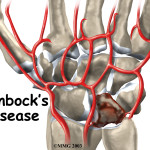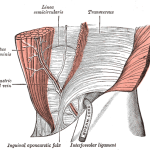INTRODUCTION
Cervical radiculopathy is a pathology of the cervical nerve root (Dox et al 1979). It is frequently associated with cervical disc herniation or another space occupying lesion (such as osteophytes), which can cause nerve root impingement and inflammation. As many of you will be aware, this can be a very painful and often debilitating condition.
Although the natural history of the condition is favourable, it has been suggested that if the condition becomes chronic it can be recurring and impact negatively on physical and mental health (Daffner et al., 2003). Therefore, it is essential that as physiotherapists we are aware of the most evidence informed diagnosis and treatment techniques for cervical radiculopathy.
ASSESSMENT AND DIAGNOSIS OF CERVICAL RADICULOPATHY
SUBJECTIVE
Mechanism: often unremarkable as the majority of cases seem to occur from non-traumatic and spontaneous causes (Ellenberg et al 1994). It has been reported less than 15% of cases are secondary to trauma or physical exertion (Radhakrishnan et al 1994).
The patients may report:
- Arm pain +/- neck pain
- Altered sensation/parasthesias
- Upper limb weaknesses
OBJECTIVE
Many authors reports that the diagnosis of a cervical radiculopathy is largely clinical (Wainner & Gill, 2000). The classic objective findings (Fager et al 1993), of which the diagnostic accuracy is not well established, include:
- Dermatomal altered sensation/paraesthesias
- Myotomal muscle weaknesses
- Reduced muscle stretch reflexes
- Reduced cervical range of motion (Ellenburg et al 1994)
Objective testing may also show Positive Provocative Testing (Wainner & Gill, 2000):
- Spurling’s Sign
- Neck Distraction
- ULNTT
Wainner et al (2003) developed a CPR for identifying cervical radiculopathy. This rule exhibited a sensitivity of 94% when 3 out of 4 of the following were positive:
- Spurling’s Test
- Distraction Test
- Upper Limb Tension Test 1 (ULLT1) i.e. median nerve bias
- Ipsilateral cervical rotation of less than 60 degrees.
IMAGING
Imaging studies are indicated to supplement the clinical examination when it is unclear, other conditions need to be excluded and to potentially guide surgical decision making (Wainner and Gill, 2000). The diagnostic accuracy of the following studies is not well established.
X-Ray: Allows imaging of the bony margins and excludes significant and sinister pathologies
CT: Provides excellent resolution of the bony margins
MRI: Sensitive to soft tissue changes, including those in the disc, spinal cord and nerve roots.
ELECTROPHYSIOLOGICAL TESTS
This includes the use of needle EMG and nerve conduction velocities (Wainner and Gill, 2000). These tests can be an important adjunct for the diagnosis of cervical radiculopathy. The available studies suggest a high percentage of correlation between findings of EMG and both surgical (54 – 100%) and imaging studies (60 – 75%). As is always the case, correlation between clinical examination, imaging and electrophysiological testing will add increased support for a definitive diagnosis.
DIFFERENTIAL DIAGNOSES
To further improve your diagnostic accuracy it is essential to refute competing hypotheses. The following differential diagnoses must be excluded (Wainner & Gill, 2000):
- Myelopathy
- Upper Limb Mono-neuropathies
- RC Dysfunction
- Adhesive Capsulitis
- VA Dissection
- Tumours
TREATMENT OF CERVICAL RADICULOPATHY
CONSERVATIVE MANAGEMENT
There are a number of conservative treatments purported to be helpful in the management of cervical radiculopathy. These have been examined in a recent systematic review by Salt et al (2011). The study found some evidence for the use of:
Manual Therapies, which included:
- Cervical Mobilisation: PA Glides, Rotations, Lateral Glides
- Thoracic Mobilisation
- Shoulder Oscillations
- Glenohumeral Mobilisation
Exercises, which included:
- Cervical Retraction
- Cervical Extension
- Deep Cervical Neck Flexor Strengthening
- Scapular Strengthening
Interestingly, the study found no evidence for the use of cervical traction (Salt et al 2011). This is despite the widespread clinical use and anecdotal support for cervical traction.
INVASIVE MANAGEMENT
Few studies have examined the efficacy of injectional therapies for cervical radiculopathy. A Cochrane Review by Peloso et al (2007) showed some benefit in pain and function for epidural injection of a corticosteroid plus local anaesthetic in patients with chronic neck pain and associated radicular symptoms. Thus, it may be suggested that this form of invasise management may be indicated following failure of conservative physiotherapy treatments.
SURGICAL MANAGEMENT
There are a few surgical techniques proposed for cervical radiculopathy. These include foraminotomy, discectomy and fusion surgeries. A Cochrane Review by Nikolaidis et al (2010) examined the outcomes of surgical management with conservative management. The study found short-term outcomes of pain, weakness and sensory loss were in favour of surgical decompression. However, at one year there was no significant difference between groups.
Tumialan et al (2010) compared the outcomes of two different surgical techniques: Posterior Cervical Foraminotomy or Anterior Cervical Discectomy and Fusion. The authors of this military study found evidence for the superiority of Posterior Cervical Foraminotomy for the outcome of time to return to full active duty (mean of 4.8 weeks compared with 19.6 weeks).
CLINICAL IMPLICATIONS AND TAKE HOME MESSAGES
- The diagnostic accuracy of clinical tests and imaging is not well established.
- A number of clinical findings supported by imaging/electrophysiological testing will improve your diagnostic accuracy
- The mainstays of conservative management are manual therapies and exercise
- Surgical intervention seems to deliver quicker results, however, shows no long term benefits over conservative management
I hope this gives you some new information on the management of cervical radiculopathy. The important thing to keep in mind is that there is a significant dearth of high quality research. Often physiotherapists will rely on clinical experience in the absence of good evidence. Which begs the question – what are your experiences with the treatment of cervical radiculopathy? I want to know your thoughts (trust me I have my own), let me know in the comments or catch me on Facebook or Twitter
If you require any sports physiotherapy products be sure check out PhysioSupplies (AUS) or MedEx Supply (Worldwide)
REFERENCES
Daffner S, Hilibrand A, Hanscom B, Brislin B, Vaccaro A, Albert T. Impact of neck and arm pain on overall health status. Spine 2003;28(17):2030e5.
Dox I, Melloni BJ, Eisner GM. Melloni’s Illustrated Medical Dictionary. Baltimore, Md: Williams & Wilkins Company; 1979
Ellenberg MR, Honet JC, Treanor WJ. Cervical radiculopathy. Arch Phys Med Rehabil. 1994;75:342-352.
Fager CA. Identification and management of radiculopathy. Neurosurg Clin N Am. 1993;4:1-12.
Nikolaidis I, Fouyas IP, Sandercock PAG, Statham PF. Surgery for cervical radiculopathy or myelopathy. Cochrane Database of Systematic Reviews 2010, Issue 1. Art. No.: CD001466. DOI: 10.1002/14651858.CD001466.pub3.
Peloso PMJ, Gross A, Haines T, Trinh K, Goldsmith CH, Burnie SJ, Cervical Overview Group. Medicinal and injection therapies for mechanical neck disorders. Cochrane Database of Systematic Reviews 2007, Issue 3. Art. No.: CD000319. DOI: 10.1002/14651858.CD000319.pub4.
Radhakrishnan K, Litchy WJ, O’Fallon M, Kurlan LT. Epidemiology of cervical radiculopathy. A population based study from Rochester, Minnesota, 1976 through 1990. Brain. 1994;117:325-335.
Salt E, Wright C, Kelly S, Dean A . systematic literature review on the effectiveness of non-invasive therapy for cervicobrachial pain. Manual Therapy 2011;16:53-65
Tumialin LM, Ponton RP, Gluf WM. Management of unilateral cervical radiculopathy in the military: the cost effectiveness of posterior cervical foraminotomy compared with anterior cervical discectomy and fusion. Neurosurg Focus 2010 28;(5):E17
Wainner RS, Fritz JM, Irrgang JJ, et al. Reliability and diagnostic accuracy of the clinical examination and patient self- report measures for cervical radiculopathy. Spine 2003;28:52– 62.
Wainner RS, Gill H. Diagnosis and Nonoperative Management of Cervical Radiculopathy. Journal of Orthopaedic & Sports Physical Therapy 2000;30(12):728-744
Related Posts
Trackbacks










Cervical Radiculopathy Current Research And Best Practice…
[…]Salt E, Wright C, Kely S, Dean A. systematic literature review on the efectivenes of non-invasive therapy for cervicobrachial[…]…